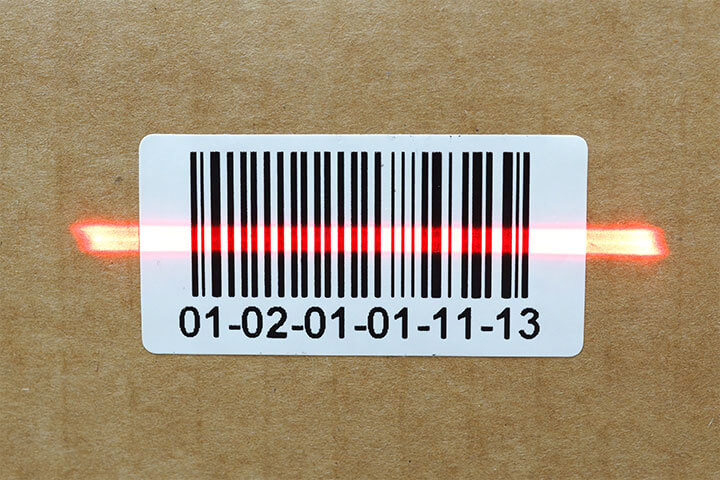Technologies


GS1 Serialisation
GS1 Serialisation is a standardised technique used to concoct numbers
and characters providing product consignments with a unique, difficult
to replicate identity.
Developed by GS1, an international, non-profit organisation that publishes a system of supply chain standards, serialisation works on the principles of security, interoperability and scalability, GS1 standards are today used by 2 million+ companies operating in 145 countries. Pharmaceutical industry, where regulatory adherence is more stringent, has taken a lead in implementing GS1 serialisation. Serialisation is now being adopted at pace in industries like Agriculture, Food and Fashion with applications ranging from provenance tracking, sustainability footprint to tackling counterfeiting.

GS1 Identification Keys include
GTIN – Global Trade Item Number (Item Identifier)
SSCC – Serial Shipping Container Code (Logistics Unit Identifier)
GLN – Global Location Number (Location Identifier)
GSRN – Global Service Relation Number (Global Service Identifier)

GS1 Data Carriers
A combination of above identification keys are converted into GS1 compliant machine-readable Data Carriers for use with the product (via packaging, label or DPM… Direct Part Marking). These include, but are not limited to barcodes, QR codes, Data Matrix and RFID.

GS1 Scanning Devices
A number of scanning devices can be used to capture data from Data Carriers. Smartphone is fast becoming a popular choice for capturing this data and processing it through a number of available applications.
Tongadive’s Serialisation based expertise
Evidnt focus
What is Evidnt?
LEVEL 1
LEVEL 2
Control the L1 hardware and manage the serial numbers which are printed and applied on packages.
LEVEL 3
(Optional) Manages the line systems to ensure that they are working optimally.
LEVEL 4
Generates serial numbers and manages/ verifies serialization regulatory data/compliance reporting.
LEVEL 5
The network level serialization and regulatory data is managed ensuring communication with partners and complying with regulations.
Next Generation
Machine Learning/ AI/ Blockchain enabled integrated systems providing regulatory compliance, end to end visibility and sustainable supply chain.
Levels of Serialisation and Information Management in Supply Chain.
Blockchain DLT
Distributed Ledger Technology (DLT) is a protocol that enables a distributed, decentralised database managed by multiple participants across multiple nodes. Blockchain is a form of DLT.
DLT uses cryptography to store information in a secure and accurate manner. This information can be accessed using “keys” and cryptographic signatures. The stored information becomes an ‘immutable’ database and is governed by the rules of the network.
The nature of a decentralized ledger makes data immune to a cyber-crime, as all the copies stored across the network need to be accessed at same instance for the cyber-attack to be successful. At the same time, simultaneous (peer-to-peer) sharing and updating of records make the process faster, effective, and cheaper.
In consensus driven digital ledger technology (DLT), data records are created and updated with the consensus of all parties involved in a close network of businesses. This makes data ‘immutable’, even by the party that created it and it is this immutability that enables enterprise-grade Blockchain to bring trust in data. In the supply chain world, the details of the product origin and its journey stored using Blockchain DLT, bringing inherent trust in the product. Tongadive has chosen to partner with R3 Corda as its blockchain platform. R3 Corda has a successful and credible track record in Financial industry and provides privacy, security and scalability essential for regulated industries like healthcare.

Artificial Intelligence
AI technologies are developing at an exponential pace and are taking some or all of the following routes:

Augmented Intelligence
where repeated tasks are automated to bring efficiency

Machine Learning
where machines learn by performing certain tasks and increase their own knowledge automatically

Smart Technologies
which combine AI with other technologies like Blockchain and cloud to bring holistic smart solutions

In the context of supply chains, all three aspects of AI are at play. AI machines with the ability to analyse and predict demand data, help manufacturers achieve ‘Just-in-Time’ production and make the entire supply chains efficient, green and cost effective.
Neural networks —and more specifically, artificial neural networks (ANNs)—mimic the human brain through a set of algorithms. At a basic level, a neural network is comprised of four main components: inputs, weights, a bias or threshold, and an output. Applying regression techniques to these four components, accurate predictions can be made.
Tongadive team has worked extensively on Machine Language based Neural Networks and Deep Learning methodologies to develop a unique algorithm for predicting accurate demand. It has used time series prediction/ forecasting and anomaly detection with LSTM recurrent nerual network in Python with Keras.
Tongadive’s approach on Neural Networks based AI engine to forecast demand and tying this back to Serialised Data was recognised by UK Research and Innovation (Innovate UK) expert team and selected for funding.
Microservices Architecture
Tongadive has used Microservices Architecture which is an architectural style that structures an application as a collection of services. This enables the various features and services in Evidnt to be owned by a small team of experts and be
- Highly maintainable and testable
- Loosely coupled
- Independently deployable
- Organized around business capabilities
Some of the Microservices used in Evidnt Architecture are:
- Master Command Service
- Master Query Service
- Disposition Query Service
- Web Service
- Disposition Command Service
- Web UI
- User management
- Notification Service
- Logging service
Cloud based SaaS and On-Prem Solution
Tongadive’s Evidnt has a unique capability to run either as a cloud based Software-as-a-Service (SaaS) or as an on-prem deployment.
In SaaS option Evidnt runs via a web browser or similar and hosted in the Cloud. This comes with the advantages of cost effectiveness, ability to run the latest versions of the software each time, no IT infrastructure changes and lower TCO.
With some changes in functionality, it is also possible to deploy and run Evidnt On Prem. This brings greater control over the process and organisational data as well as ability to develop own rules on data sharing and exchange.